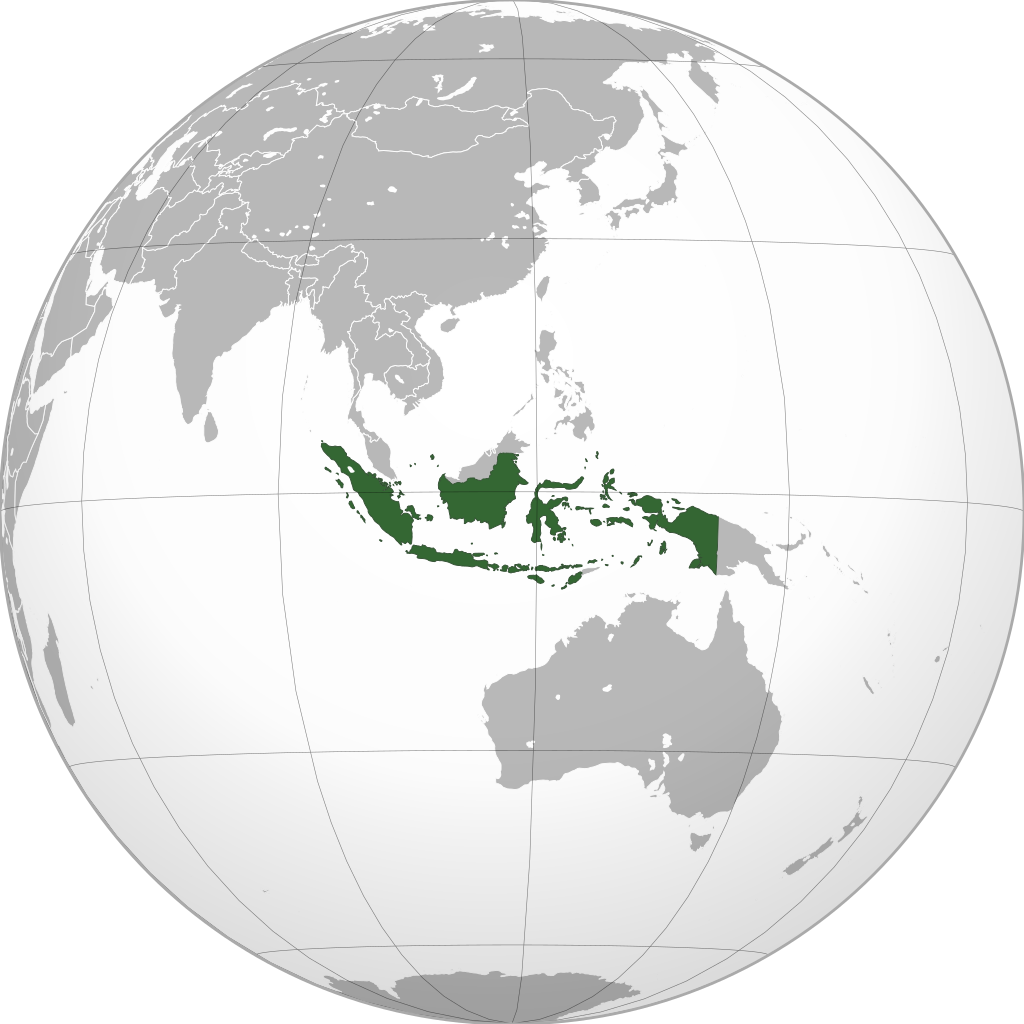More languages
More actions
| Republic of Indonesia Republik Indonesia | |
|---|---|
 | |
| Capital and largest city | Jakarta |
| Official languages | Indonesian |
| Dominant mode of production | Capitalism |
| Area | |
• Total | 1,904,569 km² |
| Population | |
• 2021 estimate | 273,879,750 |
• 2020 census | 270,203,917 |
Indonesia, officially the Republic of Indonesia, is an island liberal country in Southeast Asia.
History
Dutch colonialism
The Dutch enslaved people from Celebes, imprisoned them in secret dungeons, and then sent them to Java. From 1750 to 1811, the population of Banjuwangi in Java dropped from 80,000 to 18,000.[1]
Sukarno government
In 1948, during negotiations with the Dutch, the Communist Party of Indonesia (PKI) attempted a revolution. The army killed many of the PKI's leaders and jailed about 36,000 people.
President Sukarno tried to form an alliance between the PKI and his nationalist movement. In 1957, he declared martial law to prevent a communist revolution because 30% of soldiers were in the PKI.[2]:152–3
Mass killings
In October 1965, General Suharto accused the PKI of organizing a coup attempt after the death of six generals.[3] He overthrew non-aligned president Sukarno with British, Australian, and Statesian support[4] and began mass executions of communists and suspected leftists. The CIA provided lists of thousands of suspected communists to Suharto.[5] Trade unionists and ethnic Chinese were also targeted.[6]
The military killed up to two million people, including 8% of the population of Bali. D. N. Aidit, the leader of the PKI, was murdered while trying to escape to Yogyakarta.[2]:154
Invasion of East Timor
In 1975, one day after U.S. President Gerald Ford and Secretary of State Henry Kissinger finished their visit to Indonesia, Suharto began an invasion of East Timor. Indonesian forces overthrew East Timor's government and killed 100,000 to 200,000 people out of a total population of 600,000.[7] The CIA stated that this may not have been possible without U.S. support. Suharto ruled until 1998.[4]
References
- ↑ Domenico Losurdo (2011). Liberalism: A Counter-History: 'What Is Liberalism?' (pp. 20–21). [PDF] Verso. ISBN 9781844676934 [LG]
- ↑ 2.0 2.1 Vijay Prashad (2008). The Darker Nations: A People's History of the Third World: 'Bali'. [PDF] The New Press. ISBN 9781595583420 [LG]
- ↑ Vincent Bevins (2017-10-20). "What the United States Did in Indonesia" The Atlantic. Archived from the original on 2022-04-11. Retrieved 2022-05-07.
- ↑ 4.0 4.1 "Suharto: 'One of the greatest mass murderers of the 20th century'" (2008-02-03). Independent. Archived from the original on 2021-09-09. Retrieved 2022-05-07.
- ↑ Austin Murphy (2000). The Triumph of Evil: 'Introduction' (p. 41). [PDF] European Press Academic Publishing. ISBN 8883980026
- ↑ "Indonesia: US Documents Released on 1965-66 Massacres" (2017-10-18). Human Rights Watch. Archived from the original on 2022-03-24. Retrieved 2022-05-07.
- ↑ Michael Parenti (1995). Against Empire: 'Imperial Domination Updated; With Rational Violence' (p. 16). [PDF]


